F-2 Fighter JASDF
[Page 1]

F-2 model in 1/32 scale: modelling report and conversion by Meindert de Vreeze
Conversion from F-16 kit
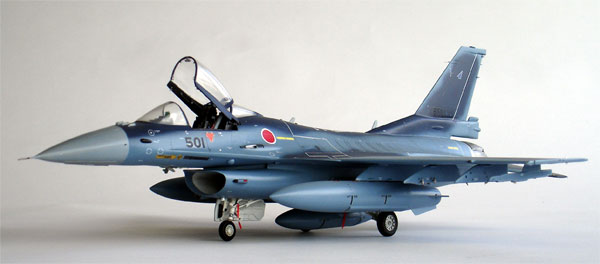
The Mitsubishi
F-2 fighter from Japan always had my attention as an interesting aircraft
with its F-16 resemblance and nice colours. In 1/32 a model would be a
very nice companion to the F-16 models, and as I had been given a spare
F-16C kit from Revell
by my good modelling friend Peter and still had some spare parts from F-16
kits of Hasegawa, I started a conversion
project.
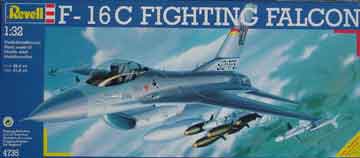
The Revell F-16 kit is quite basic but has an accurate shape for a F-16 model. The kit has been released in several variants, an F-16A kit #H-4701 in 1979, and with some new parts in the kit for the F-16C kit #4735 in 1991.
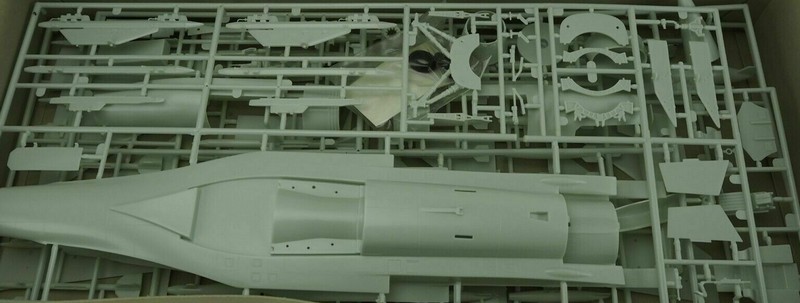
Also in various releases decals varied for schemes as the greys, agressor scheme, Tiger scheme etc. and some different parts.
In the Revell F-16 kit there is no actual engine intake ducting. Also the cockpit has just a few details, decals being supplied for the instrument panels. It has rubber wheels and the undercarriage bays are not too bad. You also get some stores, but only 1 centerline fuel tank. Stores like the Sidewinders are very basic.
This kit will
be extensively be converted into a Japanese F-2 fighter.
First some history about the real F-2 aircraft type:

The F-2 is intended
to be the latest generation fighter for the JASDF as companion of the currently
used F-15J's. Starting in the nineteen nineties, the Japanese aircraft
industry started to develop their own fighter, using expertise of General
Dynamics/Lockheed on the F-16. Mitsubishi acted as main contractor.
Called initially the
FS-X, the aircraft looks like a F-16 but is very different indeed. The
wing is significantly larger than the F-16 wing. The rear fuselage is one
frame longer; it has a tri-part canopy and lots of new Japanese avionics
and internal equipment. The radome is also slightly larger to host the
radar.
The engine
is the now standard F-16 engine, the GE F-110-GE. The subtype is the -129
engine.
The now re-designated F-2 has a lot of under wing pylons that can carry Japanese missiles and standard US ordnance. First flight was in 1995. The F-2 has a good performance but the project had lots of problems and cost overruns. At the end of 2004 it was decided by the Japanese Government that the number of F-2's that will be put into service will be much lower than originally envisaged.
Some 60 F-2 aircraft are operated by the JASDF (as of 2019). More orders were intended for the JASDF but due to high costs, no more aircraft were produced.
F-2 wingspan
(including the tip launchers) is 11.13 m, length 15.52 m.
As a reference for this significant conversion
I obtained the 1/72 kit of the F-2 of Hasegawa number E15. It is
a state of the art kit for this scale and can be used a check up model
for the larger 1/32 model based on the Revell
F-16 kit to be made.
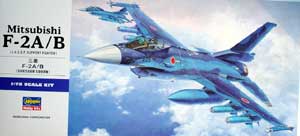 1/72
kit
1/72
kit
The F-2 fuselage has an extra frame
in the rear fuselage.
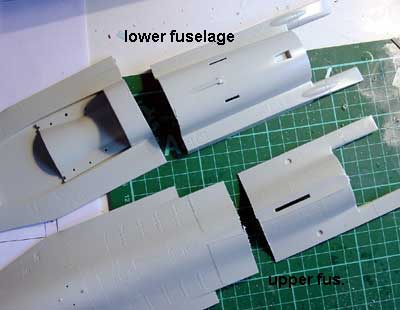
A cut was made in the upper fuselage part of the Revell kit
and at a more forward position in the lower fuselage to keep some strength
in the "to be constructed" fuselage later on.
An insert was made of bended plastic card,
adding strength with longitudinal strips.
The extra fuselage length is here "one frame", being 11 mm in 1/32 scale.
Below
can be seen the added card for strength inside the rear fuselage.
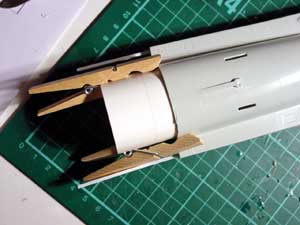
Measuring the Hasegawa reference kit it was
discovered that the F-2 has the smaller F-16 engine air intake, despite the
GE-110 engine used. This is the same as the first F-16C 's that were delivered
to the USAF at about the same period the F-2 project was started. This
meant that the older style F-16 intake was needed. Although the Revell
kit has the correct small intake, the kit gives you no intake ducting!
One looks straight into the bare fuselage and nose wheel bay. As I had
a spare Hasegawa 1/32 intake (of the Hasegawa S27/ 08027 or use the S25/
08025 kit), I decided to craft this intake onto the Revell kit. The result
is seen here and it fits very well indeed with some cutting, sanding and
filler.
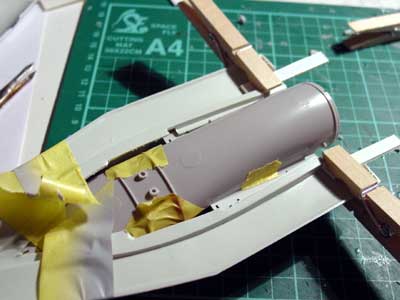
The Hasegawa F-16 kit's intake is much better and sharper moulded that the one of the Revell kit so this is an improvement indeed. Also, the main wheel bay is also much better and will be used as it is integrally moulded on the intake ducting of the Hasegawa kit.
It can be seen here. A small part
of the Revell intake was still needed on the side of tha main gear bay.
This was cut-off and installed.
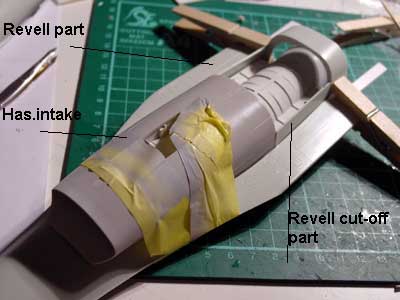
The F-2 wings are much (about 35
%) larger that the wing of the F-16. Also the wing span is larger. It was
discovered that the wing sweep is also a bit different but the larger area
is in the inboard wing sections near the to be blended in fuselage. The
outboard sections are very similar to that of the F-16 ! Using the Revell
kit's wing, a conversion using these parts can be done. Several cuts are
needed, see the pictures.
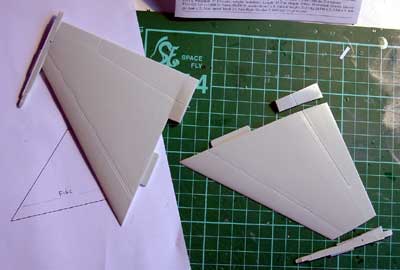
The tips needs some slightly different
angles of sweep, the launching rails for the wing tip missiles were cut
off. Note the small portion of wing that was also cut off here.
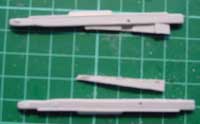
Below, the new added area made with
thick card is seen of the inboard sections. A lower and upper piece of
card was used to get body into the inboard wing profiles and the get the
appropriate wing shape. Make sure to get enough strength by using supporting
thick card.
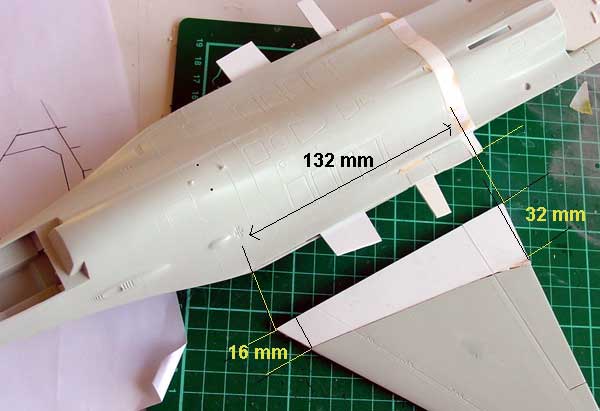
As can be seen in the picture, the
inboard card section is tapered as the wing sweep angle is not so big as
on the General Dynamics/Lockheed F-16. This is caused by the fact that
the wing loading is smaller than on the F-16, requiring less sweep for
similar performance.
The section added has the dimensions
as een in the picture, measurement in millimeters (mm).
In fact the triangular wing root
section is 16 mm at the leading edge and 32 mm
at the trailing edge. Also note the small fillet at the rear,
the flap section cut-off the F-16 wing and re-installed at the fuselage
with some extra card.

The radar nose of the F-2 is slightly
larger , especially at the lower section of the radar nose. A lower cut
was made in the Revell radar cone , the nose bended in a slightly different
shape and card used to get a smooth result. The radar nose width was kep
the same as for the original (F-16) nose.
The radar nose is also a bit more
tilted down when seen sideways, this can be done through sanding off some
plastic.. Filler is needed later on.
Nose wheel bay can be used as supplied
for the F-16.
Below can be seen massive amounts
of filler to smoothing things up. A lot of sanding , patience and work
is needed here... but the F-2 is beginning to emerge as a model...
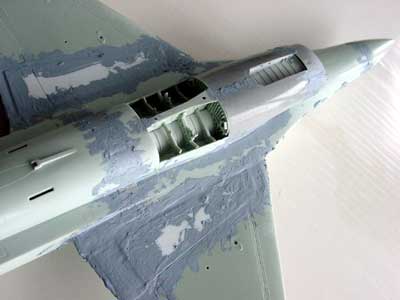
The F-2 cockpit section is also changed
compared to the F-16, with a 3 piece canopy and the cockpit is also slightly
more forward in the fuselage. A cut was made, some material removed. The
rear section of the F-16 cockpit canopy can be used. Of the main canopy,
the rear part can be used. A new windscreen is needed however that is more
straight curved (will be done later on).
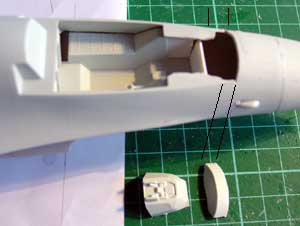
Some blending and filling is seen
here. Also note the wider sidewalls made with some card.
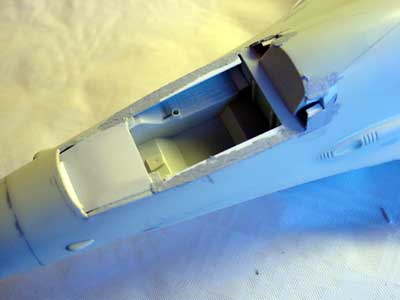
The stabilizers of the F-2 are also
much larger than those of the F-16. The F-16 parts can be used as a basis
however, supplemented with again pieces of plastic card. An 8 mm wide root
section was added, the tip section trailing edge was sanded in a triangular
shape.
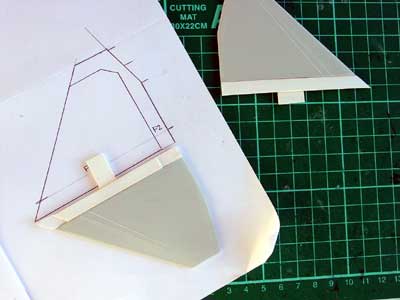

Filling and sanding gives the correct larger stabilizers.

The basic shape of the F-2 is seen
here. Also note the wing root edge/fuselage LEX , made from card and blended
in with putty. The wing is much bigger now!
The F-16 vertical tail can seen with a thin base section (at the older F-16A's) or a thick base. (Note: the thick section tail is normally used on the later variants of the F-16).
The F-2 tail is similar to the F-16C tail. The kit's tail however does not have the long parachute fairing
as seen in also in for example the actual F-16C. As I had a spare
1/32 scale Hasegawa vertical tail of the F-16C with a thick lower base,
I used that part. The fairing at the rear was extended with card, filler
and sanding was needed off course.
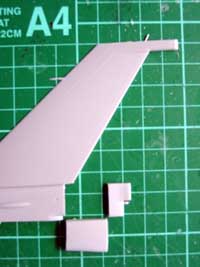
separated
parts...

Below, the forward windscreen can
be seen made using a spare part from the spares box. (note: It can also
be made from a simple straight curved section of clear plastic acetate
if needed).
Also note the wing root fillets made
from card and filler , making the F-2 wing more blended into the fuselage
and air flow being guided aft the cockpit.
Also, at the wing leading edges, 2
small fairings (I think for ECM antennas) were added from a piece of plastic
rod and sanded in shape.
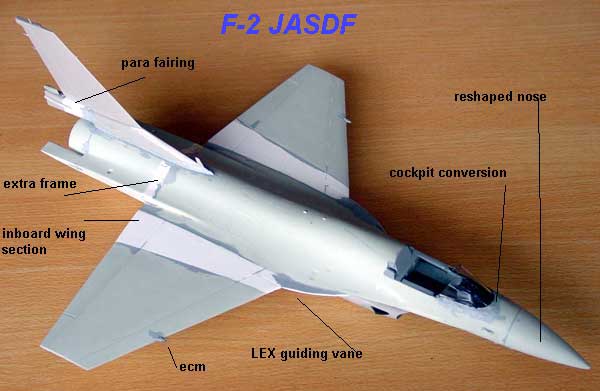
on to F-2 PAGE [2]......

page 1
page 2
page 3
- 50 years of JASDF, MOOK, mr. Tokunaga, Aoki, Matsuzaki, ISBN 4-87149-627-9: has splendid colour pictures!
- The Hasegawa kit of the F-2 in 1/72 or 1/48 scale
- Air International volume 52 page 145-150
- World Air Power journal 39, pages 40-50
- www.F-16.net
Back to Model pictures.......
-
(c) Copyright "designer"/ All rights reserved. Your comments are welcomed by webmaster
Created February 5, 2005